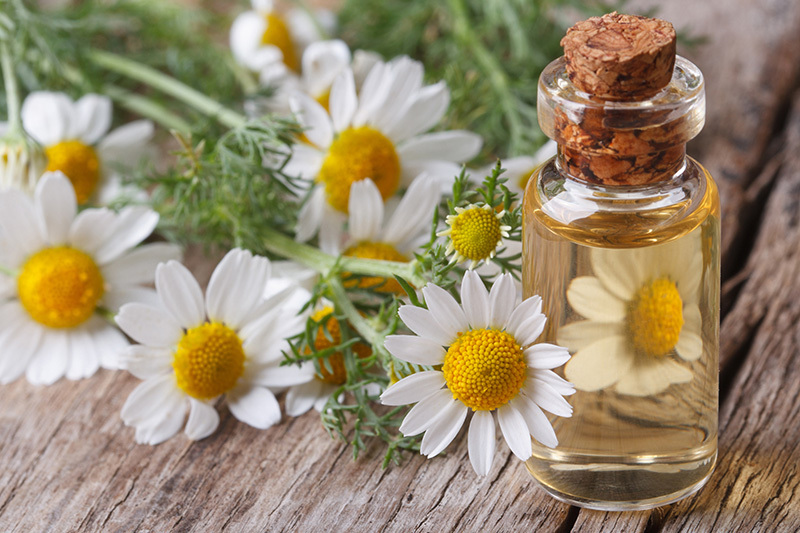Extend Your Flower's Lifespan with These 3 Simple Tricks
Posted on 14/08/2025
Extend Your Flower's Lifespan with These 3 Simple Tricks
Fresh flowers brighten any room, infusing spaces with vibrant colors, enchanting fragrances, and a touch of natural beauty. Yet anyone who loves floral arrangements knows that their charm is all too fleeting--those radiant blooms soon begin to wilt, droop, and fade. But what if you could make your flowers last longer?
In this comprehensive guide, we reveal three simple, science-backed tricks to prolong your cut flower's lifespan. Whether you're caring for a hand-picked garden bouquet, a luxury florist delivery, or even supermarket flowers, these tips are proven to keep cut flowers fresh for days--sometimes even weeks--longer. Read on to discover the art and science of floral longevity!
Why Do Fresh Flowers Fade So Quickly?
Before we delve into the specific strategies for extending the life of your flowers, it helps to understand why flowers wilt. Once a flower is separated from its plant, it enters survival mode--cut off from its roots, water supply, and nutrients. Several factors speed up the wilting process:
- Lack of water and nutrients (the stem can no longer absorb what it needs)
- Loss of internal moisture through evaporation
- Bacteria growth in water containers, which blocks the stem's ability to drink
- Warm temperatures and direct sunlight, which accelerate decay
By addressing these issues, you can significantly extend the shelf life of cut flowers. Let's dive into three simple tricks to keep flowers fresh longer!

Trick #1: Give Flowers a Clean Start
Prune, Trim, and Clean Everything
The way you prepare your flowers upon arrival directly affects their longevity. Follow these essential steps for the best results:
-
Wash Your Vase Thoroughly:
Bacteria are the enemy of fresh blooms. Clean your vase with hot, soapy water before use, then rinse well to remove all soap residues. Even a small amount of leftover bacteria can spoil water quickly, hastening wilting. -
Trim Flower Stems Underwater:
Use a sharp knife or floral shears to cut one to two inches off the stems at a 45-degree angle. Cutting underwater prevents air from entering the stem's vascular system, which can block water uptake. This angled cut also increases the surface area for water absorption. -
Remove Any Leaves Below the Waterline:
Any foliage submerged in water will decay, encouraging bacteria growth. Strip off lower leaves, thorns, or plant material that can rot in the vase.
Pro Tip: For woody stems (like roses or lilacs), crush the ends slightly after trimming to enhance water uptake. For hollow stems (like delphinium), turn upside down, fill them with water, then quickly submerge in the vase to maximize hydration.
Trick #2: Feed Your Flowers Correctly
The Power of Flower Food--and DIY Alternatives
Commercial bouquets often come with a small packet of "flower food." This floral preservative is vital for extending the life of your bouquet by providing nutrients and suppressing bacteria. But if you run out, don't worry! You can create effective homemade flower food with simple household ingredients.
- Mix a Homemade Solution: Combine 1 teaspoon white sugar (provides nutrients), 1 teaspoon bleach or a few drops (kills bacteria), and 2 teaspoons lemon juice or vinegar (acidifies water) in 1 quart of lukewarm water. This combination closely mimics commercial flower food.
- Use the Right Water Temperature: Most flowers prefer lukewarm water. Cold water can shock some delicate blooms, while hot water promotes decay. Exceptions: bulbs (tulips, daffodils, hyacinths) and woody stems often last longer in cooler water.
- Change Water Every 2-3 Days: Clean the vase, re-cut the stems, and replenish with fresh flower food solution each time. This routine slashes bacteria and supplies ongoing nourishment.
Never use water that is too hot or filled with air bubbles, as it can damage or dehydrate the stems. Always let tap water sit for a few minutes to let any air escape before arranging flowers.
Popular Myths: Aspirin, Vodka, Pennies?
You may have heard that adding copper pennies, aspirin, or even vodka can keep cut flowers fresh longer. Some of these old wives' tales work--slightly--but none outperforms a real floral food mixture. Still, a few drops of vodka can inhibit ethylene (the aging hormone in flowers), while pennies provide trace antibacterial copper. They may add a day or two--but don't skip flower food altogether!
Trick #3: Location, Location, Location!
Perfect Conditions to Keep Flowers Fresh
Where and how you display your flowers is just as important as water and food. Follow these guidelines to maximize your arrangements' lifespan:
-
Keep Out of Direct Sunlight:
Place flowers in a cool, shaded spot--far from windows, radiators, heating vents, or intense sunlight. Excess light and heat speed up water loss and accelerate petal droop. -
Avoid Fruit Bowls and Ripening Produce:
Fruit, especially apples and bananas, releases ethylene gas, which hastens flower petal drop. Keep arrangements away from fruit trays, kitchens, or pantries with ripening produce. -
Keep Away from Electronics:
TVs, computers, and appliances generate warmth that can dry out flowers. Find a cool, draft-free place for your bouquet to thrive.
At night, consider relocating your vase to a cooler area, such as a basement or garage--just avoid freezing conditions. This can "rest" your flowers and further prolong the lives of cut flowers.
Reviving Wilted Blooms: Last-Chance Lifesavers
If some stems look droopy while others remain crisp, it isn't too late!
Try these revival techniques:
- Re-cut Stems Underwater to open up water channels.
- Place flowers in warm water (100-110?F) for 30 minutes to encourage uptake.
- Mist delicate petals gently to restore freshness.
- For hydrangeas, submerge the entire bloom in water for an hour--they can absorb water through their petals!
Bonus Tips to Maximize Flower Freshness at Home
- Choose the Freshest Flowers: Buy blooms with closed buds and strong, undamaged stems for the longest vase life.
- Remove wilting flowers immediately to prevent ethylene buildup and bacteria from spreading to healthy petals.
- Avoid overcrowding: Pack arrangements loosely to allow air flow around each stem.
- Support heavy heads: Use clean floral wire or tape to prop up drooping flower heads, letting water reach all blooms equally.
- Keep vases and water clean throughout your arrangement's life.
- Display your flowers in cooler rooms when possible--moderate temperatures always win!
Specific Flower Care: What Each Bloom Needs
Some flowers need special attention for the best results. Here's how to prolong a wide variety of cut flower's lifespans:
- Roses: Remove outer "guard" petals; cut stems under water daily.
- Tulips: Prefer cool water; will continue to grow and curve in the vase--support stems with a narrow vase.
- Hydrangeas: Submerge heads in water if floppy; smash stem base for better water uptake.
- Daffodils: Can release sap that harms other flowers--display separately or soak in water for a few hours, then rinse stems before mixing.
- Lilies: Remove pollen stamens on arrival (prevents stains and keeps petals vibrant longer).
- Orchids: Mist petals lightly; do not overwater.

Frequently Asked Questions
How long do cut flowers last with proper care?
With ideal conditions, most cut flowers last 7-10 days; some (like orchids, chrysanthemums, carnations, and alstroemeria) can remain beautiful for 2 weeks or more!
Is sugar really necessary for floral longevity?
Sugar fuels the blooms after they are cut. Without it, they starve faster, but don't overdo it--too much sugar boosts bacteria.
Can I use cold water or ice cubes to keep flowers fresh?
Cold water is perfect for many bulb flowers, but most cut blooms actually prefer room temperature. Ice water can shock delicate petals and possibly slow water absorption.
Conclusion: Enjoy Longer-Lasting Blooms with These Simple Flower Care Tricks
No one likes to watch their favorite flowers wilt and fade before their eyes. By following these three simple tricks for extending cut flower life--careful preparation, correct feeding, and a strategic display location--you'll keep your arrangements looking fresh far beyond their expected lifespan.
- Start with a sanitized vase and fresh stem cuts.
- Use flower food (homemade or store-bought) and renew water every other day.
- Keep flowers cool and away from heat, fruit, and sunlight.
With a little extra care, your bouquets will stay radiant, fragrant, and full of life--filling your home with joy day after day. Try these long-lasting flower tips with your next arrangement and experience the difference for yourself!
For more flower care advice, arrangement inspiration, and seasonal floral tips, explore more articles right here. Happy arranging!
```Latest Posts
Understanding Yourself Through the Lens of Your Birth Flower
Extend Your Flower's Lifespan with These 3 Simple Tricks
Birth Month Blossoms and Their Secret Meanings





